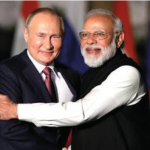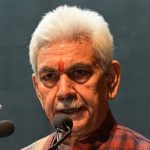Tourism experiences are brief and instantaneous but rich. It has been argued that decontextualisation is the challenge that can damage the tourism product and make it less valuable. In the same series of threats is the dumbing down of the heritage .It results from the momentary involvement of the tourist with asset and destination. Tourists may arrive at destination at a time when the festival signifying the culture of the local people has already begun. It leaves the tourist dumb founded as he makes an advent at a time when the expression of the ritual has begun, he starts deriving his own conclusions and may end up in deriving a false picture. Another example is the purchase of a handicraft but the tourist not being aware of the process of its traditional manufacturing process. It gives rise to speculations. These complexities need redressal as heritage tourists are not ordinary tourists. He arrives at the destination with some prior knowledge or internalization of the heritage but wants to explore the roots of its foundation. When he is dissatisfied by the sensitization process that does not come to its expectations, heritage tourism loses an ambassador.Tourism practitioners are addressing this challenge to address the subtleties that can have adverse impact on the tourist perception. It has to be borne in mind that the tourist manuals are often oversimplified and do not give the correct version of the heritage and fail to interpret it. As has been argued elsewhere that heritage is not mass tourism or a routine tourism that can be presented by simplified manuals or guidebooks. But it needs the proper research and analysis before arriving at the conclusions. Heritage tourism enthusiasts, like other tourists want to experience the experience of the destination and its heritage tourism products themselves and are not interested in listening to lectures and sermons. The marketing strategies in case of heritage tourism have an added role to devise a product that has a self-regulated mechanism and there is no need to intervene in disturbing the momentum of the tourist. Instructions should be self-explanatory as the tourist in case of heritage is the one who has the basic understanding of behavior towards the cultural property. That is why the cost imposed on experience in this form of tourism is important, like the entry fee at the archaeological sites. It helps to keep away the non-serious tourist ‘who can damage the asset from the heritage asset. Thus, heritage tourism cannot be treated as the generator of the economic boon alone but involves the refinement at every stage to wean away the forces that pose challenge to it. Conservation aspect is necessary to intervene at two levels-to mitigate the manmade and natural calamities to reduce the risk of its vandalisation. Heritage tourism is not only a business but the expression of the cultural property and its expression varies as per the domestic, regional and international sectors. All these segments have different expectations from the same product; it needs both ways of sensitization. Host and the tourist have to be educated of the expectations and demands that arise out of this activity. Stereotypes and misconceptions about each other are to be nipped in the bud. This is the main challenge to make heritage tourism sustainable. Literature available internationally meant to address the shared heritage values stresses the need for community mastery for the sustainable development of the heritage.
Search
Archives
- August 2025
- July 2025
- June 2025
- May 2025
- April 2025
- March 2025
- February 2025
- January 2025
- December 2024
- November 2024
- October 2024
- September 2024
- August 2024
- July 2024
- June 2024
- May 2024
- April 2024
- March 2024
- February 2024
- January 2024
- December 2023
- November 2023
- October 2023
- September 2023
- August 2023
- July 2023
- June 2023
- May 2023
- April 2023
- March 2023
- February 2023
- January 2023
- December 2022
- November 2022
- October 2022
- September 2022
- August 2022
- July 2022
- June 2022
- May 2022
© 2022 Foxiz News Network. Ruby Design Company. All Rights Reserved.










